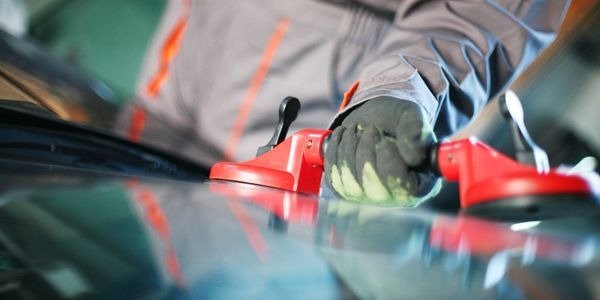Getting a cracked or shattered windshield replaced can be a stressful experience, but knowing what to expect makes the process much easier. From removing the damaged glass to recalibrating modern safety systems, a professional windshield replacement usually takes between 1.5 and three hours. However, the exact timing depends on your vehicle, the tools used, and whether your car has advanced driver-assist features.
Here’s a step-by-step look at the process so you know exactly what happens and why each step matters.
Initial Inspection (20–30 minutes)
Before anything is removed, a technician inspects the damage to confirm that a full replacement is needed. Small chips can often be repaired, but long cracks or shattered panels almost always require new glass.
They’ll also check:
- The type of glass your car uses (standard or OEM)
- If sensors or cameras are attached to the windshield
- Any seal or frame issues that need to be addressed
This quick inspection helps avoid surprises later and ensures the right tools and glass are ready.
Removing the Damaged Windshield (1-2 hours)
After inspection, the technician removes the old windshield. This step involves:
- Taking off trim pieces and moldings around the glass
- Cutting through the adhesive that holds the windshield in place
- Carefully lifting the broken glass out
It’s a delicate process, so rushing can damage the frame or scratch paint, which can cause leaks later. Professional installers use specialized tools to make sure the removal is clean and safe.
Preparing the Frame and Installing the New Glass (20–30 minutes)
Once the damaged windshield is out, the technician cleans and preps the frame. This includes:
- Removing old adhesive
- Checking for rust, dents, or surface damage
- Applying a fresh layer of primer and high-strength adhesive
After preparation, the new windshield is carefully positioned using suction tools. Accurate placement is crucial, not only for appearance, but also for safety. The adhesive must form a tight, even seal to protect against leaks and support the car’s structure in a collision.
Sensor Recalibration for Modern Vehicles (15–45 minutes)
Many newer vehicles have advanced driver-assistance systems (ADAS), which rely on cameras and sensors mounted on the windshield. These systems power features like lane departure warnings, forward collision alerts, and automatic emergency braking.
Replacing the glass slightly changes the sensor alignment, so recalibration is necessary. There are two types:
- Static recalibration: Done in-shop using special targets to reset cameras.
- Dynamic recalibration: Involves a controlled test drive where the system relearns road markings and distances.
Not every vehicle requires recalibration, but when it’s needed, skipping this step can affect how your safety systems work.
Drying and Safety Check (30–60 minutes)
The adhesive that secures your windshield needs time to cure before you can safely drive. The drying period, called safe drive-away time, varies based on:
- The type of adhesive used
- Temperature and humidity
- Manufacturer recommendations
During this stage, the technician also checks for proper sealing, verifies that the trim pieces are reattached securely, and ensures there are no gaps or leaks.
Final Cleaning and Handover (5–10 minutes)
Before returning the vehicle, the installer wipes down the glass and removes any fingerprints or adhesive residue. They’ll explain:
- How long to wait before driving
- When it’s safe to wash the car
- Care tips to help the adhesive set properly
They may also review warranty details for the glass and installation.
How Long You Should Expect Overall
For most vehicles, a basic windshield replacement without sensors takes about 1.5–2 hours from start to finish. If recalibration is required, the total time can extend to 1.5–3 hours.
Choosing experienced technicians ensures the process goes smoothly and avoids mistakes that lead to leaks, improper sealing, or misaligned cameras.
Tips to Make the Process Faster and Smoother
- Schedule ahead so the right glass is ready for your vehicle
- Ask about mobile service if driving with damage is unsafe
- Confirm recalibration needs before the appointment
- Use professionals with proper tools because cutting corners can cost more later
Final Thoughts
A windshield isn’t just glass; it’s a critical safety feature. Proper installation protects your visibility, supports your vehicle’s structure, and ensures modern safety systems function as intended.
By understanding the replacement process, you’ll know what’s happening at every step and why it matters. While the average appointment typically lasts only about one to two hours, the peace of mind you gain from a safe and secure installation lasts far longer.


